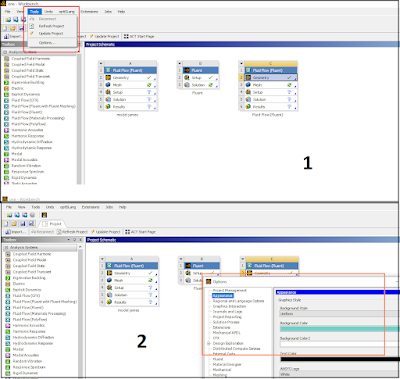The time scale factor is a parameter that controls the size of the time step used in the pseudo-transient approach for steady state simulations. The pseudo-transient approach is a method that stabilizes the numerics by adding a time derivative term to the governing equations and marching the solution in time until a steady state solution is reached1.
The time scale factor can be either specified by the user or computed automatically by ANSYS Fluent. By default, ANSYS Fluent will compute the time scale factor based on the representative length scale and velocity scale of the flow, as well as the Courant number. The Courant number is a dimensionless number that measures the ratio of the physical time required for a fluid particle to cross a cell to the numerical time step2.
The choice of the time scale factor depends on the type and characteristics of your fluid flow, such as the density variation, the flow regime, and the convergence criteria. Here are some general guidelines for choosing the time scale factor 2:
- If you have a constant-density flow or a flow with small density variations, you can use the default value that ANSYS Fluent computes for you. You can also adjust the Courant number to increase or decrease the time step size.
- If you have a variable-density flow or a flow with large density variations, such as natural convection or compressible flow, you should specify the time scale factor based on the outside pressure and temperature conditions. You can also use the Boussinesq approximation or the ideal gas law to calculate the time scale factor as a function of temperature and pressure.
- If you have a multiphase flow or a flow with multiple gas species and chemical reactions, you should specify the time scale factor based on the mass-weighted average of the time scales of each phase or species.
You can find more details about the time scale factor and its effects on different types of fluid flows in Chapter 13 of ANSYS Fluent Theory Guide2. You can also watch some videos of ANSYS Fluent simulations using different values of time scale factor 3 .
How to specify time scale factor for multiflows (multiphase) ? - for mass - weighted average
The time scale factor is a parameter that controls the size of the time step used in the pseudo-transient approach for steady state simulations. The pseudo-transient approach is a method that stabilizes the numerics by adding a time derivative term to the governing equations and marching the solution in time until a steady state solution is reached1.
To specify the time scale factor based on the mass-weighted average of the time scales of each phase or species, you need to follow these steps:
- In the Solution panel, select Time Step Size and then click Edit… to open the Time Step Size dialog box.
- In the Time Step Size dialog box, select Physical Timescale under Method. This will enable you to specify the time scale factor manually.
- In the Physical Timescale field, enter the value of the time scale factor that you want to use in your problem. You can calculate the value of the time scale factor based on the mass-weighted average of the time scales of each phase or species using this formula 1:
- Click OK in the Time Step Size dialog box. ANSYS Fluent will use the specified time scale factor to calculate the size of the time step for your simulation.
You can find more details about the time scale factor and its effects on different types of fluid flows in Chapter 13 of ANSYS Fluent Theory Guide1. You can also watch some videos of ANSYS Fluent simulations using different values of time scale factor 23.






